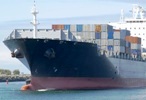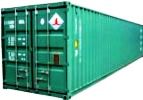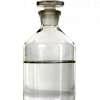| Mubychem Group, established in 1976, is the pioneer manufacturer of Propylene Carbonate, Pharmaceutical, Fragrance & Flavor chemicals in India. Mubychem Group has several manufacturing facilities spread across Gujarat and Mumbai India and world wide contacts and toll manufacturers. We are exporting globally to countries like USA, Canada, Europe, UAE, South Africa, Tanzania, Kenya, Egypt, Nigeria, Uganda, Turkey, Mexico, Brazil, Chile, Argentina, Dubai etc. |
The participating units have one or more accreditations like FDA - GMP approval; ISO-9001 Certified; "REACH"registered; ISO-22000; Kosher Certified;Halal Certified; HACCP. We offer Pure & IP BP USP FCC Food Grade ACS AR Analytical Reagent Grades of Chemicals | |







Propylene Carbonate SDS MSDS Sheet of Manufacturers
Specifications of Propylene Carbonate
Propylene Carbonate
Pure and
USP NF Grade

Propylene Carbonate SDS MSDS Sheet, Material Safety Data Sheet
Section 1: Chemical Product and Company Identification
Product Name: Propylene carbonate
Synonyms : 1,2-Propanediol cyclic carbonate; 4-Methyl-1,3-dioxolan-2-one
CAS#: 108-32-7
Intended use: Industrial Manufacturing Use.
Section 2: Hazards Identification
GHS, Globally Harmonized System Classification in accordance with 29 CFR 1910
Classification according to Regulation (EC) No 1272/2008
Skin irritation (Category 3)
Eye irritation (Category 2A)
Labeling according GHS USA & Regulation (EC) No 1272/2008
GHS Label Elements  Irritant |
Signal Words: Warning
Hazard statements:
H316: Causes mild skin irritation
H319: Causes serious eye irritation
Precautionary statements:
P262: Do not get in eyes, on skin, or on clothing.
P264: Wash skin thoroughly after handling.
P280: Wear protective gloves/protective clothing/eye protection/face protection.
P273: Avoid release to the environment.
P332+313: If skin irritation occurs: Get medical advice/attention.
P302+ P352 - IF ON SKIN: Wash with plenty of soap and water.
P305+ P351 + P338 IF IN EYES: Rinse cautiously with water for several minutes. Remove contact lenses, if present and easy to do. Continue rinsing.
P337+P313 If eye irritation persists: Get medical advice/ attention.
Classification according to EU Directives 67/548/EEC or 1999/45/EC:
Symbols: Xi
R Phrases: R36 Irritating to eyes.
Section 3: Composition and Information on Ingredients
Composition Name: Propylene carbonate
CAS #: 108-32-7
% by Weight: >99%
Section 4: First Aid Measures
Eye Contact: Check for and remove any contact lenses. In case of contact, immediately flush eyes with plenty of water for at least 15 minutes. Cold water may be used. Get medical attention.
Skin Contact: In case of contact, immediately flush skin with plenty of water. Remove contaminated clothing and shoes. Cold water may be used. Wash clothing before reuse. Thoroughly clean shoes before reuse. Get medical attention.
Inhalation: If inhaled, remove to fresh air. If not breathing, give artificial respiration. If breathing is difficult, give oxygen. Get medical attention.
Ingestion: Do NOT induce vomiting unless directed to do so by medical personnel. Never give anything by mouth to an unconscious person. Loosen tight clothing such as a collar, tie, belt or waistband. Get medical attention if symptoms appear.
Section 5: Fire and Explosion Data
Products of Combustion: Emits oxides of carbon and fumes when heated to decomposition.
Suitable extinguishing media: Use water spray, alcohol-resistant foam, dry chemical or carbon dioxide.
Advice for firefighters: Wear self-contained breathing apparatus for firefighting if necessary.
Section 6: Accidental Release Measures
Small Spill: Use appropriate tools to put the spilled solid in a convenient waste disposal container. Finish cleaning by spreading water on the contaminated surface and dispose of according to legal requirements.
Large Spill: Soak up with inert absorbent material and dispose of as hazardous waste. Keep in suitable, closed containers for disposal.
Section 7: Handling and Storage
Precautions: Do not ingest. Do not breathe dust. Wear suitable protective clothing. In case of insufficient ventilation, wear suitable respiratory equipment. If ingested, seek medical advice immediately and show the container or the label. Avoid contact with skin and eyes. Keep away from incompatibles. Moisture sensitive combustible liquid.
Storage: Keep container tightly closed. Keep container in a cool, well-ventilated area.
Section 8: Exposure Controls/Personal Protection
Engineering Controls: Use process enclosures, local exhaust ventilation, or other engineering controls to keep airborne levels below recommended exposure limits. If user operations generate dust, fume or mist, use ventilation to keep exposure to airborne contaminants below the exposure limit.
Personal Protection: Splash goggles, Lab coat, Gloves, Dust respirator. Be sure to use an approved/certified respirator or equivalent.
Personal Protection in Case of a Large Spill: Splash goggles. Full suit. Dust respirator. Boots. Gloves. A self contained breathing apparatus should be used to avoid inhalation of the product. Suggested protective clothing might not be sufficient; consult a specialist BEFORE handling this product.
Exposure Limits: Not established.
Section 9: Physical and Chemical Properties
Physical state and appearance: Clear colorless liquid.
Odor: fruity.
pH: 7
Molecular Weight: 102.09
Molecular Formula: C4H6O3
Boiling Point: 240C.
Flash point: 116 °C (241 °F) - closed cup
Relative Density: 1.189 g/ml.
Solubility: Soluble.
Section 10: Stability and Reactivity Data
Stability: It is stable. Incompatible with moisture.
Incompatibility with various substances: Acids and Bases.
Polymerization: Will not occur.
Section 11: Toxicological Information
Toxicity to Animals:
(LD50): 5000 mg/kg [Rat].
LD50 Dermal - Rabbit - > 2,000 mg/kg
Carcinogenic Effects: Not a reported carcinogen by IARC, NTP, ACGIH, OSHA.
Section 12: Ecological Information
Toxicity to fish: semi-static test LC50 - Cyprinus carpio (Carp) - > 1,000 mg/l - 96 h
Toxicity to daphnia and other aquatic invertebrates: static test EC50 - Daphnia magna (Water flea) - > 1,000 mg/l - 48 h
Toxicity to algae: EC50 - Desmodesmus subspicatus (green algae) - > 900 mg/l - 72 h
Products of Biodegradation: Possibly hazardous short term degradation products are not likely. However, long term degradation products may arise.
Toxicity of the Products of Biodegradation: The products of degradation are less toxic than the product itself.
Section 13: Disposal Considerations
Waste Disposal: Waste must be disposed of in accordance with state and local regulations.
Section 14: Transport Information
DOT (USA) & ADR/RID: Not dangerous goods
IMDG: Not dangerous goods
IATA: Not dangerous goods
Section 15: Other Regulatory Information
USA Regulations:
Section 313: This material does not contain any chemical components with known CAS numbers that exceed the threshold (De Minimis) reporting levels established by SARA Title III, Section 313.
SARA 311/312 Hazard Categories: Acute health hazard
California Proposition 65: This product does not contain any Proposition 65 chemicals.
16. ADDITIONAL INFORMATION
Disclaimer:
*****************************
Our company provides this MSDS sheet in good faith but makes no representation as to its comprehensiveness or accuracy. This SDS sheet is intended only as a guide to the appropriate precautionary handling of the material by a properly trained person using this product. The above information has been compiled from various sources and has the possibility of discrepancy and being out-dated information. Individuals receiving the information must exercise their independent judgment and do further search in determining its appropriateness for a particular purpose. In no case shall our company be liable to loss or damages by the product user.
*****************************
Propylene Carbonate USP NF grade Manufacturers:
MUBYCHEM GROUP
CHINCHBUNDER, MUMBAI 400009, INDIA
TEL: (OFFICE) 91-22-23774610, 91-22- 23723564. 91-22-23728264
e-mail: anmol@pcmenergy.com

Copyright and Usual Disclaimer is Applicable.

Global or International Propylene Carbonate USP NF Grade --- Suppliers, Exporters, Importers, Manufacturers
If I give you “My Word” Nobody can undo it.
If I sign an “Agreement” my Lawyer will undo it
Perfection is made up of small thing but it is not small.
